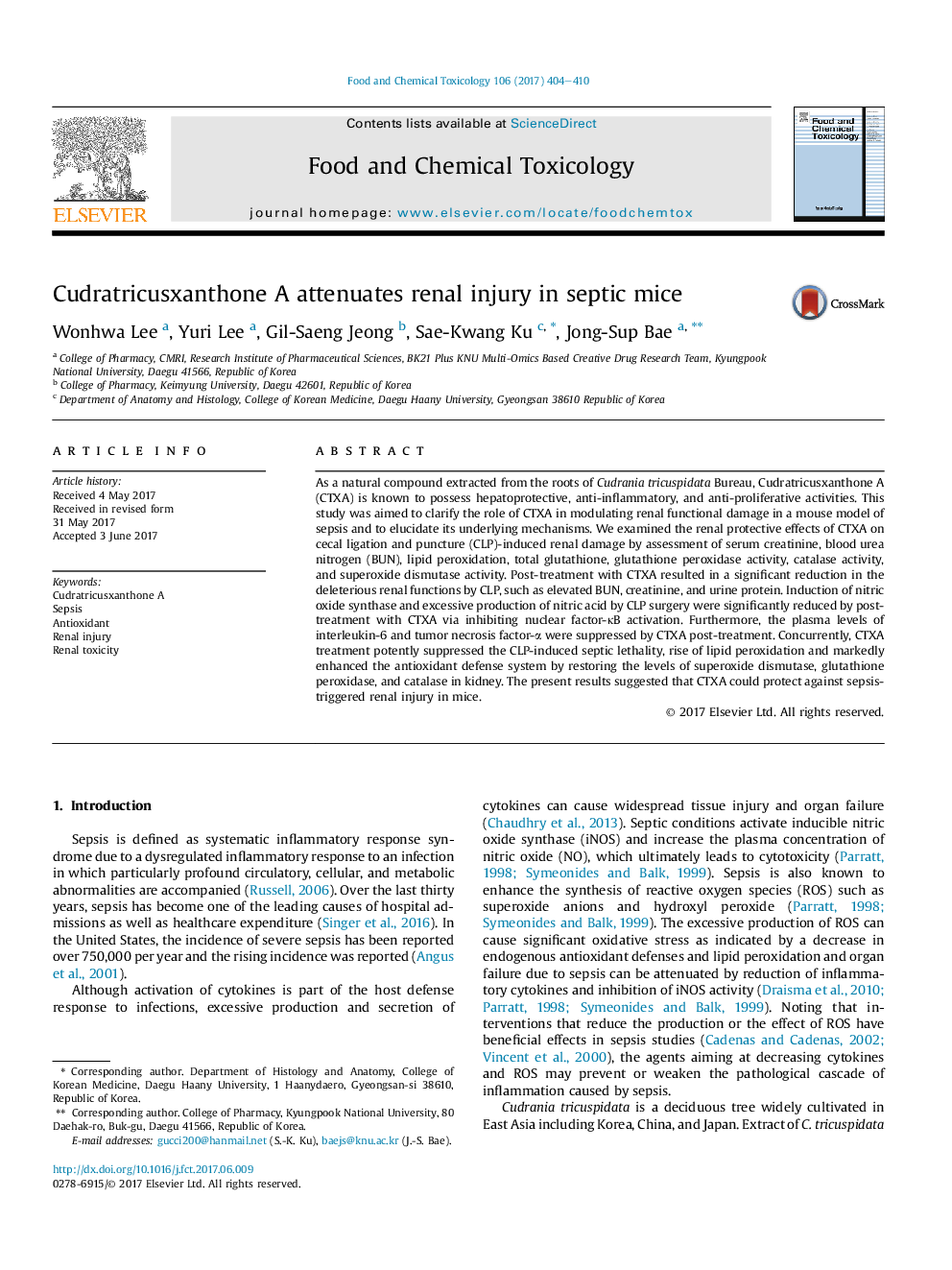| Article ID | Journal | Published Year | Pages | File Type |
|---|---|---|---|---|
| 5560138 | Food and Chemical Toxicology | 2017 | 7 Pages |
Abstract
As a natural compound extracted from the roots of Cudrania tricuspidata Bureau, Cudratricusxanthone A (CTXA) is known to possess hepatoprotective, anti-inflammatory, and anti-proliferative activities. This study was aimed to clarify the role of CTXA in modulating renal functional damage in a mouse model of sepsis and to elucidate its underlying mechanisms. We examined the renal protective effects of CTXA on cecal ligation and puncture (CLP)-induced renal damage by assessment of serum creatinine, blood urea nitrogen (BUN), lipid peroxidation, total glutathione, glutathione peroxidase activity, catalase activity, and superoxide dismutase activity. Post-treatment with CTXA resulted in a significant reduction in the deleterious renal functions by CLP, such as elevated BUN, creatinine, and urine protein. Induction of nitric oxide synthase and excessive production of nitric acid by CLP surgery were significantly reduced by post-treatment with CTXA via inhibiting nuclear factor-κB activation. Furthermore, the plasma levels of interleukin-6 and tumor necrosis factor-α were suppressed by CTXA post-treatment. Concurrently, CTXA treatment potently suppressed the CLP-induced septic lethality, rise of lipid peroxidation and markedly enhanced the antioxidant defense system by restoring the levels of superoxide dismutase, glutathione peroxidase, and catalase in kidney. The present results suggested that CTXA could protect against sepsis-triggered renal injury in mice.
Related Topics
Life Sciences
Agricultural and Biological Sciences
Food Science
Authors
Wonhwa Lee, Yuri Lee, Gil-Saeng Jeong, Sae-Kwang Ku, Jong-Sup Bae,
